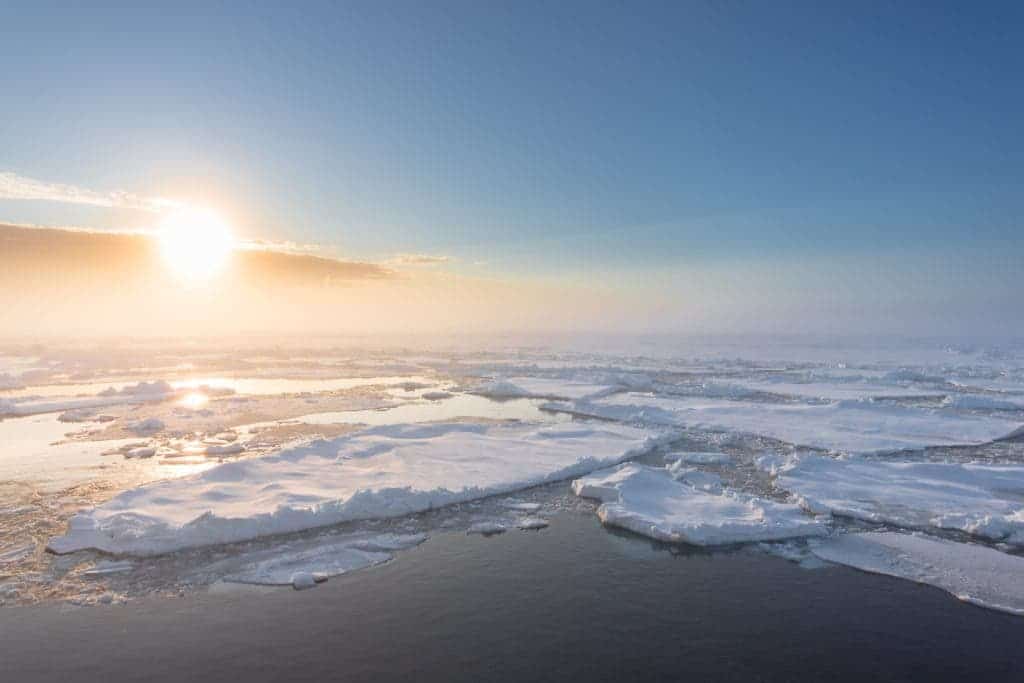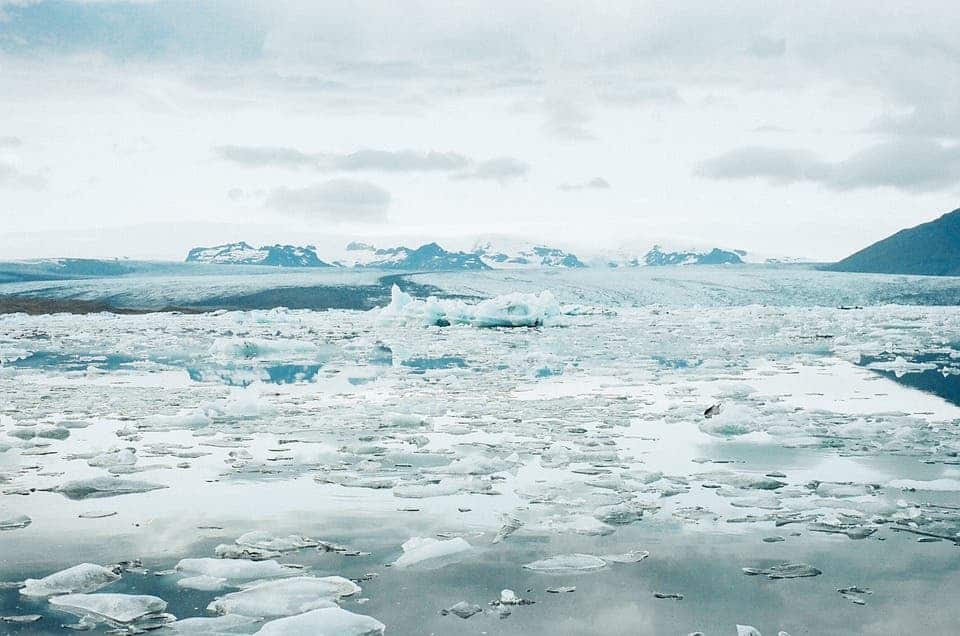The Arctic Ocean was once a huge freshwater lake, but it’s since become a salty ocean — we now know how.

Drift ice and pack ice seen from aboard the German research vessel Polarstern, on the way to the North Pole. Image credits: Stefan Hendricks.
The Arctic Ocean is the smallest and shallowest of the world’s five oceans. The International Hydrographic Organization (which is responsible for the classification) recognizes it as an ocean, though some scientists consider it a sea or simply an estuary of the Atlantic Ocean. Still, regardless of classification, it’s a large mass of water which is now salty. The Arctic Ocean has the lowest average salinity, especially due to low evaporation (caused by reduced temperature), but also by heavy freshwater inflow from rivers and streams. Its limited connection to the other, saltier oceans also contributed to this.
We know the ocean started to become salty after global water levels rose enough to submerge the landbridge between Greenland and Scotland, establishing a communication channel. With the help of a climate model, researchers from the Alfred Wegener, Helmholtz Centre for Polar and Marine Research (AWI) have shown how this process happened and when things started to change.
According to the climate model they built, 3,300 cubic kilometers of freshwater flow into the Arctic Ocean every year, which means you need a lot of salt water influx to outbalance that. In the hot and humid climate of the Eocene, 56 to 34 million years ago, it was likely even higher. It was only when the above-mentioned land bridge was covered by water that the salinity started to increase.
“In reality, this tectonic submersion process lasted several million years,” says Climate Scientist Michael Stärz, first author of the study. “Interestingly, the greatest changes in the circulation patterns and characteristics of the of the Arctic Ocean only occurred when the land bridge had reached a depth of over 50 metres below the surface.”
That was a tipping point, corresponding depth of the surface mixed layer, and facilitating circulation between the Arctic and the planetary oceans. This proved to be extremely important in the climate of the Earth, leading to massive changes in heat transport between the Arctic and the rest of the world.
“Interestingly, the greatest changes in the circulation patterns and characteristics of the of the Arctic Ocean only occurred when the land bridge had reached a depth of over 50 metres below the surface.”

The land bridge is now submerged some 500 meters beneath sea level. Iceland is the only portion of it still visible. Image via Pixabay.
As waters continued to rise, another tipping point was reached. After the land bridge was submerged by 200 meters, the modern version of the Arctic Ocean started to take shape.
“Only when the oceanic ridge lies below the surface mixed layer can the heavier saline water of the North Atlantic flow into the Arctic with relatively little hindrance,” explains Stärz. “Once the ocean passage between Greenland and Scotland had reached this critical depth, the saline Arctic Ocean as we know it today was created.”
Nowadays, what used to be this enormous, basaltic land bridge is submerged at 500 meters below sea level, with Iceland being the only region remaining above water level.
Journal Reference: Michael Stärz, Wilfried Jokat, Gregor Knorr, Gerrit Lohmann — Threshold in North Atlantic-Arctic Ocean circulation controlled by the subsidence of the Greenland-Scotland Ridge. Nature Communications. DOI: 10.1038/NCOMMS15681.









